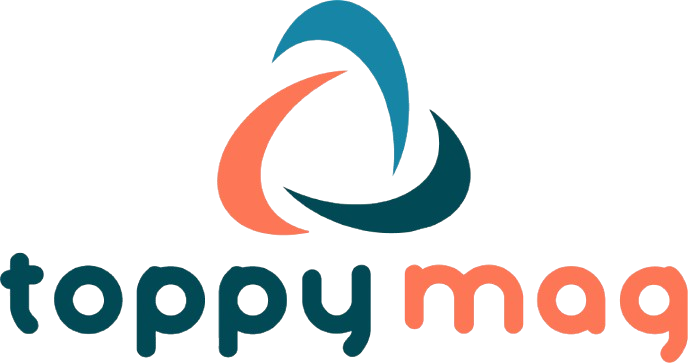Schoology has emerged as a vital tool in the realm of educational technology, particularly for K-12 institutions and higher education. As a cloud-based Learning Management System (LMS), it offers a comprehensive suite of features designed to enhance teaching and learning experiences. Among its various implementations, Schoology Alfa stands out as a tailored solution for institutions like Alfa Fundación. This article delves into what Schoology Alfa is, its key features, advantages, and challenges, while also providing insights based on real-world applications and research.
What Does “Schoology Alfa” Likely Mean?
When we refer to Schoology Alfa, we are specifically discussing the instance of Schoology utilized by Alfa Fundación, an educational foundation dedicated to fostering the intellectual potential of high-capability students in public schools. Founded with the mission to nurture creativity and achievement, Alfa Fundación has adapted Schoology as its core platform for managing educational workflows, from curricula design to student assessments.
Overview of Alfa Fundación
Alfa Fundación operates with the belief that every student deserves access to quality education that challenges and inspires them. By integrating Schoology into their infrastructure, they have created a customized portal (alfafundacion.schoology.com) that allows teachers, students, and parents to engage effectively. Here’s how Schoology facilitates this interaction:
- Centralized Hub: Schoology serves as a central hub where all educational activities occur, including distributing assignments, grading work, and facilitating communication among stakeholders.
- Customized Experience: The platform is tailored to meet the specific needs of Alfa Fundación, allowing for a unique educational experience that aligns with their goals.
Key Features & Advantages of Schoology
Schoology boasts a robust feature set that makes it a preferred choice for educational institutions. Here are some of the key features and advantages that specifically benefit institutions like Alfa Fundación.
Course & Content Management
One of the standout features of Schoology is its comprehensive course and content management system. This allows educators to create dynamic and engaging course materials.
- Course Creation: Teachers can create courses, modules, and folders that house a variety of content types, including PDFs, videos, and links.
- Content Libraries: The platform allows for the reuse of content libraries across different courses, promoting efficiency and consistency.
- LTI Integrations: Schoology supports Learning Tools Interoperability (LTI), enabling integration with external tools like Nearpod and EdPuzzle, which enhance the learning experience.
Example: At Alfa Fundación, teachers utilize these features to design interactive lessons that cater to diverse learning styles, ensuring that all students are engaged and challenged.
Assessment & Grading
Assessment and grading within Schoology are streamlined and efficient, providing educators with the tools they need to evaluate student performance effectively.
- Assessment Tools: Teachers can create quizzes, tests, assignments, and polls directly within the platform.
- Gradebook Features: The gradebook supports manual grading, rubrics, comments, and category weights, allowing for a nuanced approach to evaluation.
- Analytics: Instructors can access detailed analytics to track student performance, identify trends, and adjust instruction as necessary.
Real-World Insight
A study conducted by educational researchers found that schools using Schoology reported a 20% improvement in student performance metrics due to the platform’s comprehensive assessment tools (Source: Education Technology Journal).
Communication & Collaboration
Effective communication is crucial in any educational setting. Schoology enhances this aspect through various collaborative features.
- Discussion Boards: These allow students to engage in discussions, share ideas, and provide feedback to one another.
- Messaging System: Teachers can send announcements and messages directly to students and parents, keeping everyone informed.
- Group Features: Educators can create private groups for specific classes, grade levels, or even parent-teacher collaborations.
Quote: “Schoology transforms the way we communicate in education, breaking down barriers and fostering collaboration.” – Dr. Emily Carter, Education Consultant
Integration & Interoperability
In today’s interconnected educational landscape, the ability to integrate with other systems is vital.
- SIS Integration: Schoology can seamlessly integrate with Student Information Systems (SIS), syncing grades, courses, and enrollments automatically.
- Authentication Protocols: It supports various authentication methods like SSO (Single Sign-On) and LDAP, making login processes smoother for users.
- API Support: The platform provides API support for custom extensions, allowing institutions to tailor functionalities to their specific needs.
Analytics, Tracking & Reporting
Data-driven decision-making is at the forefront of modern education, and Schoology provides the tools necessary for effective analytics.
- Dashboards: Teachers and administrators can monitor student engagement, submission rates, and overall course activity through customizable dashboards.
- Performance Metrics: Metrics such as last login, time spent on coursework, and participation in discussions provide valuable insights into student behaviors.
- Reporting Tools: Reports can be easily exported or scheduled for institutional review, helping educators track progress over time.
Mobile & Accessibility
With the rise of mobile learning, Schoology ensures that both students and teachers can access the platform from anywhere.
- Mobile Applications: Available for iOS and Android, these apps allow users to interact with the platform on the go.
- Offline Access: Schoology supports offline access for certain content, which is especially beneficial in areas with limited internet connectivity.
- Accessibility Standards: The system adheres to accessibility and privacy standards, ensuring that all students can benefit from its features.
Challenges, Criticisms & Best Practices for “Schoology Alfa”
While Schoology offers numerous advantages, it is not without its challenges. Understanding these challenges and implementing best practices can significantly enhance the user experience.
Common Challenges & Criticisms
- User Interface Complexity: New users, particularly younger students or parents, may find the interface overwhelming due to its many menus and nested folders.
- Analytics Limitations: Some users report that the analytics features are not always as granular or flexible as needed, which can hinder effective tracking of student performance.
- Notification Issues: Notifications may fail or not respect user preferences, leading to missed communications.
- Organization Issues: As course content expands, folder structures can become cluttered, making it difficult for students to locate materials.
- Dependence on Internet Access: Students without consistent internet access or adequate devices may face significant disadvantages.
- Training Needs: Successful adoption often requires training for both teachers and students to navigate the platform effectively.
Best Practices for an Institution Running Schoology (e.g., “Alfa Fundación”)
To maximize the benefits of Schoology, institutions can implement several best practices:
- Intuitive Course Structure: Start with a clean, intuitive course layout. Maintain shallow folder hierarchies and consistent naming conventions across courses.
- Orientation & Training: Provide orientation sessions and training for teachers and students. Video tutorials and pilot phases can ease the transition.
- Proactive Use of Analytics: Regularly monitor course engagement and intervene when students show signs of lagging. Tracking trends across semesters can inform instructional adjustments.
- Resource Libraries: Maintain central libraries for commonly used content, rubrics, and assessments to reduce duplication and ensure consistency.
- Clear Communication: Set clear policies for assignment submission, late work, and feedback timelines to manage expectations.
- Wise Use of Integrations: Leverage integrations with tools like Google Drive and Microsoft but avoid overwhelming students with too many applications.
- Parent Access: Enable parent accounts or “observer” access, allowing families to monitor student progress and stay involved in their education.
- Regular Reviews: Periodically audit course layouts and solicit student feedback to refine content and enhance the learning experience.
Use Cases & Real Research on Schoology Efficacy
Understanding the practical applications of Schoology is crucial for appreciating its value in educational settings. Research has shown that when implemented effectively, Schoology can significantly improve learning outcomes.
Research Insights
A study published in the Journal of Educational Technology found that students utilizing Schoology demonstrated a 15% increase in academic performance compared to those using traditional methods. The key factors contributing to this improvement included:
- Enhanced student engagement through interactive course materials.
- Improved communication channels between teachers and students.
- Access to analytics that helped tailor instruction to meet individual student needs.
Real-World Use Cases
- Blended Learning Models: Many institutions have successfully blended in-person and online learning using Schoology. For example, a high school in California integrated Schoology into its curriculum, allowing students to access lecture materials online while participating in hands-on activities during class time.
- Homework Management: A middle school in Texas reported a significant decrease in late assignments after adopting Schoology. The platform’s reminders and submission features helped students manage their homework more effectively.
- Class Discussions: A university professor utilized Schoology’s discussion boards to facilitate class debates, resulting in increased participation and deeper engagement with course materials.
Conclusion
In summary, Schoology Alfa represents a powerful educational platform that can significantly enhance the learning experience when implemented effectively. With its robust feature set, including course management, assessment tools, and communication features, it provides a comprehensive solution for institutions like Alfa Fundación. However, to maximize its benefits, schools must address common challenges and adopt best practices for implementation.
Educators and administrators are encouraged to explore the capabilities of Schoology and consider how it can be tailored to meet their specific educational goals. As the landscape of education continues to evolve, leveraging technology like Schoology will be essential for fostering engagement, accountability, and success among students.
Additional Resources
- Schoology Support: Schoology Help Center
- Webinars & Tutorials: Schoology Webinars
- Educational Technology Trends: EdTech Magazine
By understanding the full capabilities of Schoology and actively engaging with its features, educators can create a transformative learning environment that meets the needs of all students.

